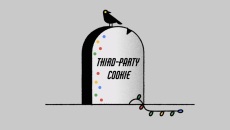WTF is Google’s Topics?
By Tim Peterson
Google’s quest to find a way forward for targeted advertising in a more privacy-centric world continues unabashed, despite its many (and vocal) detractors. After its previous proposal to replace the third-party cookie’s ad targeting capabilities came under fire for being potentially too invasive, Google has introduced an alternative cookie alternative called “Topics” that swings the pendulum in the other direction.
So, as Google’s self-imposed deadline for retiring the third-party nears next year, it’s worth reminding ourselves just WTF is going on with Google’s Privacy Sandbox portfolio of cookie alternatives and how does Topics fit in?
WTF is Google’s Topics?
Topics is among Google’s attempts to replace the third-party cookie as a means of identifying people online by striking a balance between preserving people’s privacy and preserving companies’ abilities to buy and sell targeted ads.
Third-party cookies have been the connective tissue for the online advertising ecosystem since its very inception in the 1990s, but Google has decided to disable third-party cookies in its popular Chrome browser in 2023. However, establishing consensus on how the industry can move ahead has proven tricky.
Wait, haven’t they tried this before with all the bird-themed stuff we heard about last year?
Yes, kind of, but it’s probably best that we provide some context here.
The simple fact is that Google’s previous cookie-replacement proposal — Federated Learning of Cohorts — really did put the cat amongst the pigeons if we are to stick with the aviary-themed wording. Why? Simply put, the concept of FLoCs was laden with privacy concerns (ironic, no?) and didn’t even pass muster under laws such as the European Union’s privacy law, the GDPR.
Rather than the cookie-based approach of targeting people at the individual level based on their browsing behaviors, the FLoC approach would clump people into specific interest groups — cohorts — such as people in the market to buy a car or impulse shoppers, based on their browsing history. These clusters were supposed to provide cover and give people a greater degree of anonymity online. But that privacy shield was found to be permeable.
For instance, during a trial phase, researchers raised concerns that FLoC data could be combined with people’s personally identifiable information. This meant that bad actors could expose information about people’s webpage visits and interests, raising further concerns that cohort-based targeting could be used to discriminate against particular groups of people.
However, what FLoC did introduce was the concept of using machine learning to categorize users into specific interest groups based on their browsing history. Also importantly, FLoC proposed performing this categorization on a person’s computer or phone, rather than sending the underlying data to Google’s or another company’s computers, which went some way to better preserving people’s information.
OK, Google Topics, how does it work, and how is it different from before?
So, after the FLoC blowback, Google went back to the drawing board and came up with Topics. Like …read more
Source:: Digiday





